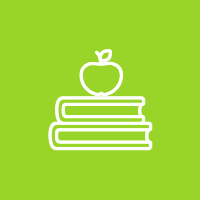Here’s a way to give your students a better appreciation for how many natural resources they depend on in their day-to-day lives. By tracing the resources that go into making one item, they will learn how the manufacturing of just one product can have an impact on the environment.
This is one of 96 activities that can be found in PLT’s PreK-8 Environmental Education Activity Guide. To get the activity, attend a training either in person or online and receive PLT’s PreK-8 Guide. Below are some supporting resources for this activity.
RECOMMENDED READING 
Expand your students’ learning and imaginations. Help students meet their reading goals, while building upon concepts learned in this activity, with the following children’s book recommendations:
ADDITIONAL RESOURCES 
The following tools and resources may be used to enhance the activity.
-
Story Maps: Why and How You Can Teach With Them
Story Maps are simple web apps that combine interactive maps, multimedia content, and user experiences to tell stories about the world. This introductory story maps workshop explains what story maps are, and why and how you can teach with them. Find and use existing Story Maps in your teaching and learn how to design and create your own story maps to teach content. Then, engage your students in creating their own story maps as part of their investigations.
-
NOAA’s Science on a Sphere – Mobile
Download SOS Explorer® Mobile and explore Earth and space from anywhere! Researchers at NOAA developed Science On a Sphere® as an educational tool to help illustrate Earth System science to people of all ages. Show animated images of atmospheric storms, climate change, and ocean temperature to explain complex environmental processes.
-
Packaging Preferences in the US
57% of consumers are actively taking steps to reduce their use of plastic packaging, according to the 2020 study U.S. Packaging Preferences 2020 released by Two Sides North America, Inc. Through this study, students can explore consumer preferences, perceptions and attitudes toward packaging materials. On top of that, find out about environmental labels on products for recycling or composting, and labels that meet certain environmental standards, such as forest certification standards.
-
Natural Resource Mapping
National Geographic’s Reading a Resource Map helps students in grades 2-4 investigate the origins of goods that people use. Use it to engage students on the topic of renewable and non-renewable resources and create a map identifying where they come from. Students will learn more about the types of goods and products that come from natural resources. They’ll also develop skills in reading and interpreting maps and apply that to learn more about the natural resources in their state.
-
Ag Across America
Ag Across America is an online geography game for grades 3-5. With this game, students will learn more about how farms provide our food, fiber, and energy. The game guides students through a series of video and trivia questions about farms across the U.S. When you answer correctly, players collect items to have on their own virtual farm. Find more games and resources for young learners at My American Farm, and professional development opportunities for educators through On the Farm STEM.
-
Guide to Responsible Green Camping
Are you worried about children being more familiar with touch screens than with soil, plants, and bugs? It might be time to get the kiddos out camping. This online guide to responsible camping will get you prepared for a green camping trip, including how to pack, how to camp, responsible camping activities, and handy safety and eco tips.
-
FoodSpan: Teaching the Food System from Farm to Fork
Resources from The Johns Hopkins Center for a Livable Future introduces students to food-system topics and issues. Explore questions such as: What are the strengths and weaknesses of local food systems? How is our food supply dependent on ecosystems? Find slides, handouts, and other supplemental materials on their FoodSpan: Teaching the Food System from Farm to Fork website.
-
Product Life Cycle Assessment Worksheet
TeachEngineering offers a basic life cycle assessment method that assigns fictional values for different steps in a product’s life cycle. Students can complete a product analysis using this worksheet and then compare product impacts, and brainstorm ways to reduce unwanted environmental effects.
-
International Carbon Footprint Challenge
International Carbon Footprint Challenge unites high school students worldwide as they calculate their individual footprints using an online “footprint calculator” and post class data on a world map. Students then enter discussions about their footprints and how to work toward solutions to globally shared environmental issues.
-
Energy Lab
This PBS NOVA series has launched the Energy Lab, where middle and high school students can design renewable energy systems for cities nationwide and compete with other students nationwide. Visit the Energy Lab website to design your own renewable energy system.
-
Planet Money Makes a T-Shirt
Join National Public Radio’s Planet Money team as they follow the manufacturing of a T-Shirt around the world — from the farms where the cotton is grown to the factories where the shirts are sewn together. This story is told in a 5-chapter story of video clips.


